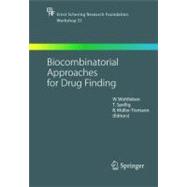
What is included with this book?
|
|||||
|
1 | (18) | |||
|
1 | (2) | |||
|
3 | (1) | |||
|
4 | (1) | |||
|
4 | (3) | |||
|
7 | (6) | |||
|
7 | (2) | |||
|
9 | (4) | |||
|
13 | (2) | |||
|
15 | (4) | |||
|
|||||
|
19 | (24) | |||
|
19 | (1) | |||
|
20 | (2) | |||
|
22 | (3) | |||
|
25 | (2) | |||
|
27 | (7) | |||
|
28 | (4) | |||
|
32 | (2) | |||
|
34 | (2) | |||
|
36 | (1) | |||
|
37 | (6) | |||
|
|||||
|
43 | (36) | |||
|
46 | (1) | |||
|
47 | (2) | |||
|
49 | (1) | |||
|
50 | (11) | |||
|
50 | (4) | |||
|
54 | (1) | |||
|
54 | (4) | |||
|
58 | (1) | |||
|
59 | (2) | |||
|
61 | (8) | |||
|
62 | (1) | |||
|
63 | (2) | |||
|
65 | (4) | |||
|
69 | (1) | |||
|
70 | (1) | |||
|
71 | (8) | |||
|
|||||
|
79 | (28) | |||
|
79 | (2) | |||
|
81 | (4) | |||
|
81 | (1) | |||
|
82 | (2) | |||
|
84 | (1) | |||
|
85 | (2) | |||
|
87 | (6) | |||
|
88 | (4) | |||
|
92 | (1) | |||
|
93 | (1) | |||
|
94 | (5) | |||
|
96 | (2) | |||
|
98 | (1) | |||
|
99 | (1) | |||
|
99 | (1) | |||
|
100 | (1) | |||
|
100 | (7) | |||
|
|||||
|
107 | (20) | |||
|
107 | (3) | |||
|
110 | (3) | |||
|
113 | (6) | |||
|
119 | (4) | |||
|
123 | (1) | |||
|
124 | (3) | |||
|
|||||
|
127 | (20) | |||
|
129 | (6) | |||
|
135 | (1) | |||
|
136 | (5) | |||
|
139 | (1) | |||
|
140 | (1) | |||
|
140 | (1) | |||
|
141 | (6) | |||
|
|||||
|
147 | (18) | |||
|
147 | (3) | |||
|
150 | (3) | |||
|
153 | (3) | |||
|
156 | (2) | |||
|
158 | (1) | |||
|
158 | (2) | |||
|
160 | (1) | |||
|
161 | (4) | |||
|
|||||
|
165 | (30) | |||
|
165 | (5) | |||
|
170 | (18) | |||
|
170 | (4) | |||
|
174 | (3) | |||
|
177 | (10) | |||
|
187 | (1) | |||
|
188 | (2) | |||
|
190 | (5) | |||
|
|||||
|
195 | (20) | |||
|
195 | (2) | |||
|
197 | (10) | |||
|
198 | (2) | |||
|
200 | (2) | |||
|
202 | (3) | |||
|
205 | (2) | |||
|
207 | (5) | |||
|
212 | (1) | |||
|
213 | (2) | |||
| 10 Precursor-Directed Biosynthesis for the Generation of Novel Glycopeptides | |||||
|
215 | (18) | |||
|
215 | (3) | |||
|
218 | (8) | |||
|
218 | (1) | |||
|
218 | (4) | |||
|
222 | (1) | |||
|
223 | (3) | |||
|
226 | (1) | |||
|
226 | (2) | |||
|
228 | (2) | |||
|
230 | (3) | |||
| 11 Tool-Box: Tailoring Enzymes for Bio-Combinatorial Lead Development and as Markers for Genome-Based Natural Product Lead Discovery | |||||
|
233 | (28) | |||
|
233 | (4) | |||
|
237 | (4) | |||
|
241 | (12) | |||
|
241 | (2) | |||
|
243 | (2) | |||
|
245 | (3) | |||
|
248 | (5) | |||
|
253 | (8) | |||
| 12 Natural Product Biosynthetic Assembly Lines: Prospects and Challenges for Reprogramming | |||||
|
261 | (24) | |||
|
261 | (2) | |||
|
263 | (2) | |||
|
265 | (5) | |||
|
270 | (1) | |||
|
271 | (1) | |||
|
272 | (3) | |||
|
275 | (2) | |||
|
277 | (1) | |||
|
278 | (7) | |||
| Previous Volumes Published in This Series | 285 |
The New copy of this book will include any supplemental materials advertised. Please check the title of the book to determine if it should include any access cards, study guides, lab manuals, CDs, etc.
The Used, Rental and eBook copies of this book are not guaranteed to include any supplemental materials. Typically, only the book itself is included. This is true even if the title states it includes any access cards, study guides, lab manuals, CDs, etc.